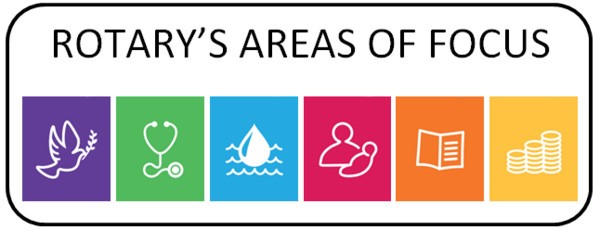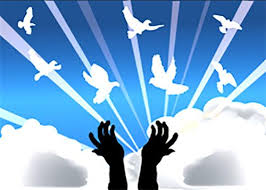Hi everyone,
I am reaching out to you today to share an insight into one of the twenty six Rotarian Action Groups (RAG) that have been established throughout the Rotary world.
All RAGs, have a specific mission. You will find there are RAGs focused on Rotary’s “Six Areas of Focus”, plus others that fall within the broader scope of each area, for instance there are Rotarian Action Groups focused on Aids and Family Health, Alzheimers and Dementia, Blindness Prevention, Diabetes, Hearing, Hepatitis, Malaria and Mental Health, all of which fall under the umbrella of our “Disease Prevention & Treatment” area of focus.

The Rotarian Action Group Against Slavery similarly has a key focus, being the elimination of human trafficking and slavery, which affects in excess of 45 million men, women and children globally. This is a massive aspiration, but not out of reach. With over 1700 members in 67 countries, RAGAS has dedicated individuals and groups who are building relationships with other NGOs working in this area, and creating global networks and partnerships to allow us to pool our passion, skills, resources and knowledge to tackle an issue as old as mankind itself.
People often say that the issue is too big, and we cannot make much - if any, difference. They might have once said the same about eradicating the disease that is Polio, but look where we are now.
Each region has a Co-ordinator, whose job is to help to connect Rotarians who share our passion for fighting slavery, to build partnerships with other organisations who can help in the fight, and set up groups of Rotarians across our regions, so our talents and skills can be shared on specific projects.
My role, as Oceania Regional Co-ordinator, is to manage these functions across the region that includes New Zealand, the Pacific Islands, and parts of Asia, including Cambodia and Thailand, where we already have established relationships with a number of NGOs and projects.
We can also access a wealth of resource material that can be used to educate students in schools. Many schools include topic studies on slavery as part of their curriculum, and get involved with organisations that need help. This may include fundraising events, with funds going to the NGO to assist with specific projects, or sending volunteer teams of students to sites where they can be involved in putting their fundraising efforts into actions that will benefit those in need.
Below is an excerpt from the RAGAS web site, that explains some of the history of our journey:
“Launched informally at the Rotary International Convention 2009, in Birmingham, England, twenty-four people expressed early interest in creating a child slavery action body within Rotary International. By the 2013 Lisbon Convention some 900 Rotarians and friends in 47 countries sign up to receive RACSNews and began to get engaged. This has grown to over 1,700 Rotarians spanning 65 countries. RIC16 (Seoul) saw a major uplift. RIC17 (Atlanta) saw a pivotal change in awareness that will help Rotary gain the critical mass needed to End Slavery Now (ESN). Already PRIP Bhichai Rattakul, two former Rotary International (RI) Presidents and past RI Directors are with us. Today, with global pressure building you will be proud to be part of this success story”.“After four years of lobbying, on 24th January 2013, the RI Board ‘acknowledged’ RAGAS as a Rotarian Action Group – the seventeenth. By doing so it recognized that Rotarians can, and should, play an active part in ending the misery, pain, shame and suffering of millions caused by illegal trafficking and human enslavement”.
According to the 2018 Global Slavery Index - https://www.globalslaveryindex.org/2018/findings/highlights/ there were in excess of 40.3 million people in various forms of slavery or trafficking as shown in the excerpt from their 2018 report below:

A staggering 71% of those who have been trafficked or enslaved are women and girls. 15.4 million women and girls are trapped in forced marriages, some as young as 10 years old – still children. Approximately one quarter, or 10,000,000 slaves are children, with around 2.5 million children trapped in child sex slavery.
